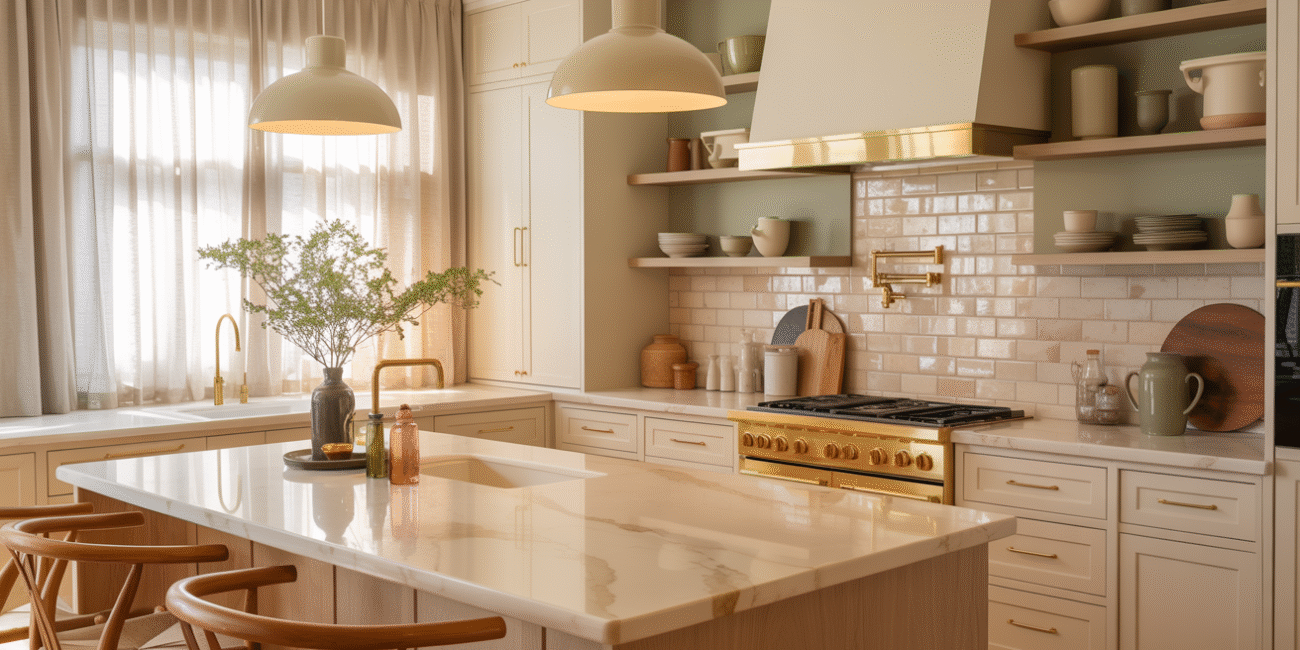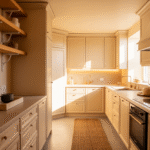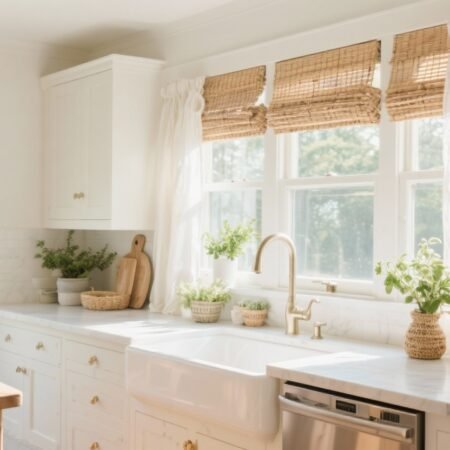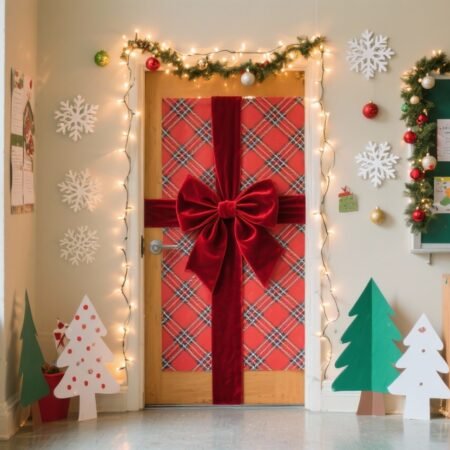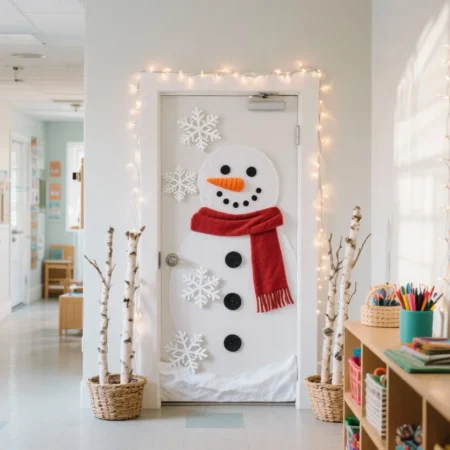There’s something timeless about a kitchen wrapped in warm, neutral hues — spaces that feel grounded yet glow with quiet sophistication. Unlike bold trends that fade with the seasons, warm neutrals balance comfort and style. They soften hard surfaces, make light dance more gracefully, and create a mood that feels both classic and current. From creamy whites and taupes to greige and honeyed woods, these tones form the perfect backdrop for everything from morning coffee rituals to late-night dinners with friends.
Below, explore eight designer-approved warm neutral palettes — each thoughtfully built for harmony, light, and real-life function. Whether your kitchen leans modern farmhouse or urban minimalism, these color stories bring out the best in your space.
1. Soft Linen & Honey Oak

A pairing that captures the warmth of sunlight on wood floors, this palette revolves around a creamy soft linen wall color (think neutral with a whisper of yellow undertone) and honey oak cabinetry. Touches of brushed brass hardware and warm marble or quartz countertops elevate the look without overwhelming it.
Perfect for: South- or east-facing kitchens that already get generous natural light.
Design tip: Choose eggshell or satin finishes for walls to reflect just enough glow while maintaining durability.
Accent suggestion: Warm terracotta or soft clay ceramics.
2. Greige & Warm White Balance
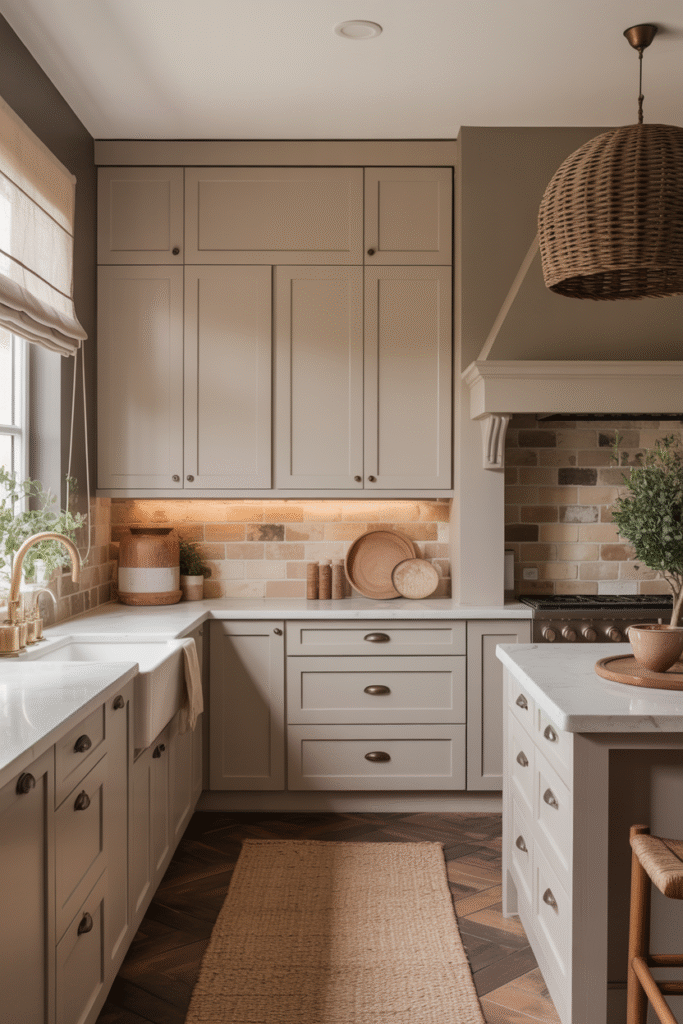
When gray feels too cool and beige too golden, greige becomes the happy medium. Use a warm greige base on walls (LRV around 60) and soft warm white cabinets to achieve contrast that’s subtle but layered. Natural stone backsplashes — especially those with cream or sand veining — add depth.
Perfect for: North-facing kitchens needing a dose of warmth.
Design tip: Pair with matte black or aged bronze hardware for a sophisticated edge.
Accent suggestion: Add textural linen curtains or woven pendant lights for balance.
3. Toasted Almond & Ivory Trim
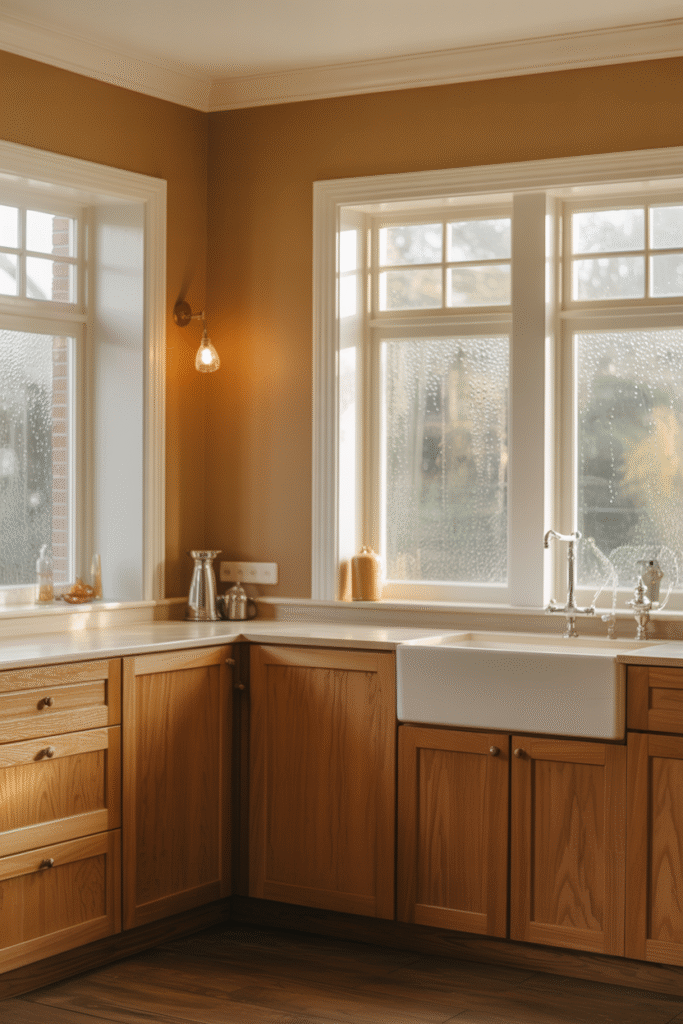
This palette feels like a cozy café on a rainy morning. The toasted almond undertone brings warmth to walls without veering yellow, while ivory trim and soft white ceilings keep the look lifted. Introduce oak or birch cabinetry for texture and harmony.
Perfect for: Transitional kitchens that blend classic and contemporary details.
Design tip: Test the wall color under different light temperatures — almond tones can shift slightly between LED and daylight bulbs.
Accent suggestion: Polished nickel fixtures add gentle contrast.
4. Warm Taupe & Smoky Stone

For kitchens where sleek meets soul, this combo pairs a warm taupe wall with smoky gray stone countertops and dark walnut cabinetry. The look feels grounded but not heavy — ideal for open-concept spaces.
Perfect for: Loft-style kitchens or those with high ceilings.
Design tip: Keep backsplash tiles light and textured to avoid visual weight.
Accent suggestion: Add amber glass lighting for extra depth and mood.
5. Creamy White & Aged Brass
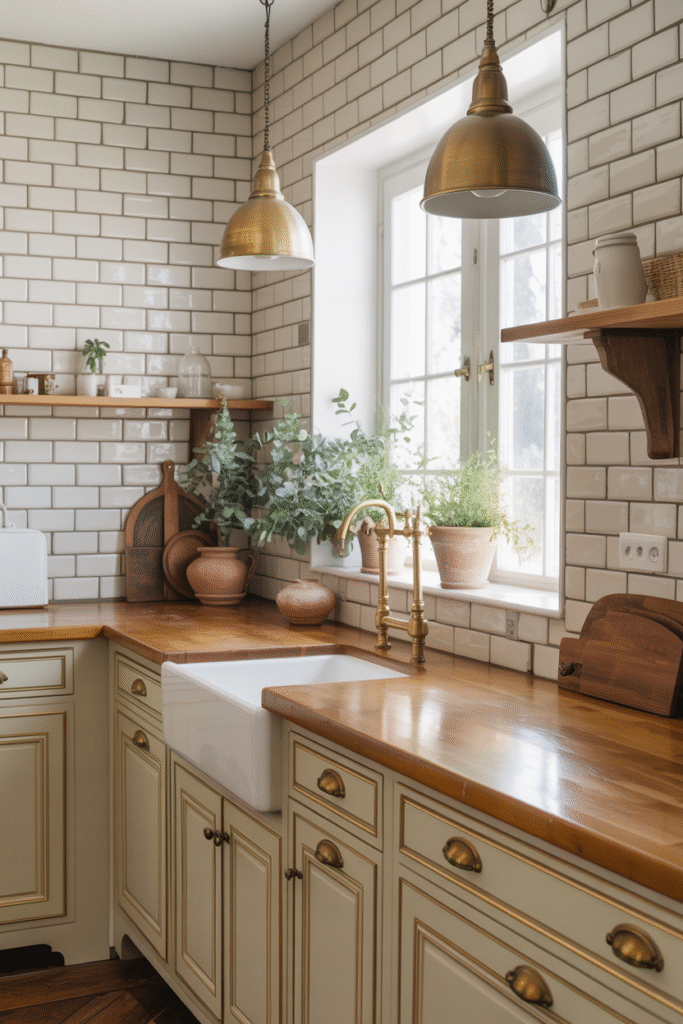
Creamy whites radiate softness and make small kitchens appear more expansive. When layered with aged brass fixtures, butcher-block countertops, and subtle beige grout lines, the effect is timelessly elegant.
Perfect for: Cottage or modern farmhouse styles.
Design tip: Choose a white with yellow or red undertones (rather than blue) to maintain warmth.
Accent suggestion: Mix in soft greenery or muted terracotta planters for a lived-in finish.
6. Sandstone & Sage
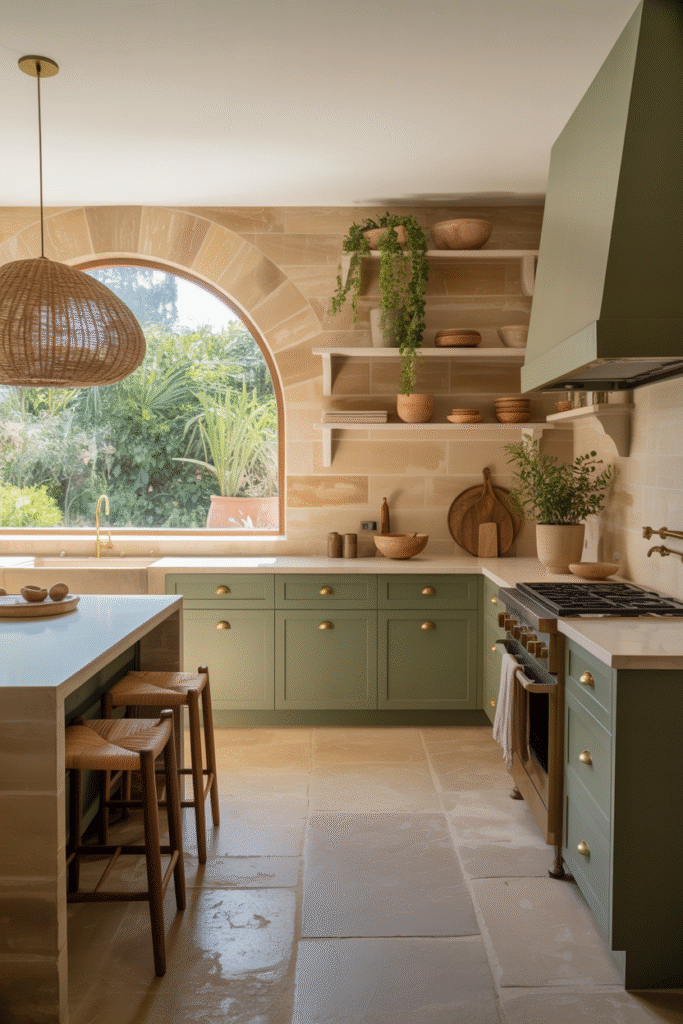
This earthy blend channels nature’s calm. Sandstone walls and sage cabinetry form a grounded palette that feels organic yet elevated. The muted green adds color while staying within the neutral family.
Perfect for: Kitchens that flow into garden or patio spaces.
Design tip: Choose natural stone floors or light rattan stools to reinforce the connection to nature.
Accent suggestion: Antique brass hardware complements sage beautifully.
7. Caramel Clay & Cream
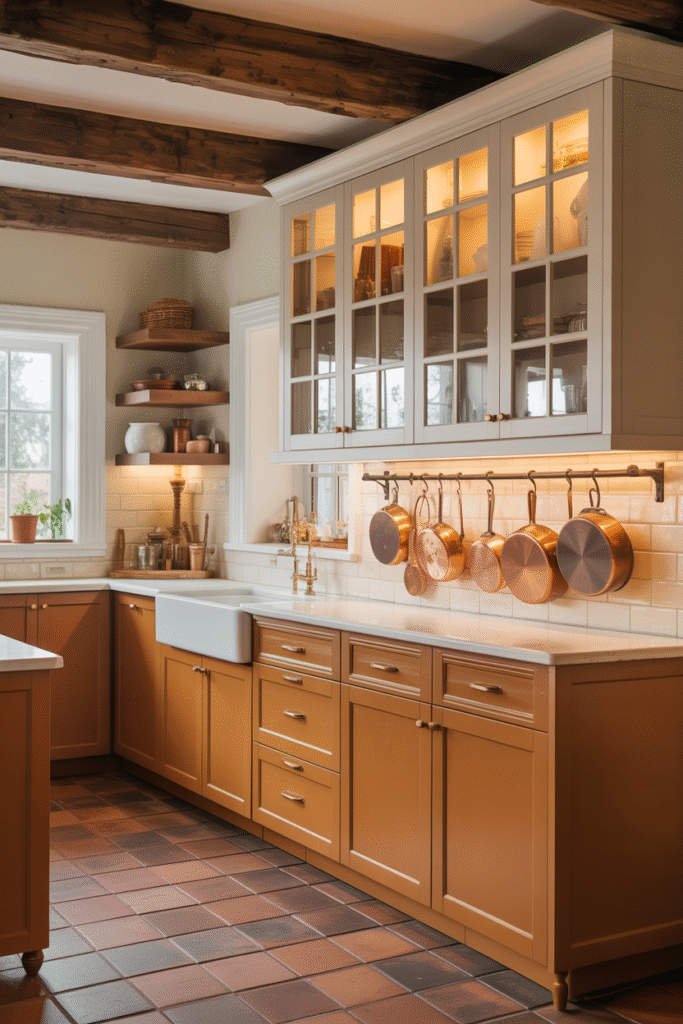
Inspired by warm desert tones, this pairing of caramel clay lower cabinets and creamy walls creates dimension and energy without overwhelming. The palette comes alive under warm ambient lighting or evening glow.
Perfect for: Open kitchens with wood beams or terracotta floors.
Design tip: Keep upper cabinets white or glass-fronted to balance the visual weight.
Accent suggestion: Copper cookware makes a natural companion.
8. Warm Mushroom & White Oak
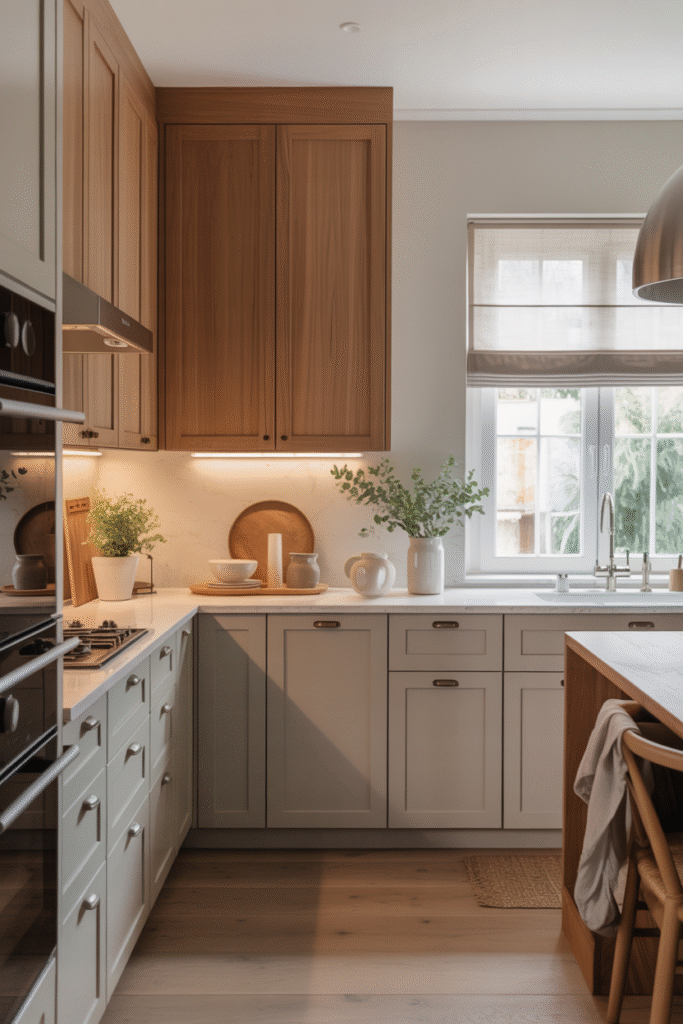
A modern neutral at heart, mushroom gray-beige offers quiet sophistication. Paired with white oak cabinetry, warm LED lighting, and matte nickel fixtures, it brings serene cohesion to any style.
Perfect for: Scandinavian or Japandi-inspired kitchens.
Design tip: Select low-sheen paints and light-filtering shades to emphasize softness.
Accent suggestion: Use white ceramic dishware and textured linen for tone-on-tone harmony.
Lighting & LRV: The Secret to Getting It Right
Warm neutral palettes live or die by light. South-facing rooms amplify yellower tones, so choose balanced beiges or greiges with mid LRVs (50–60). North-facing kitchens benefit from warmer whites to counter cool light. Always test paint samples next to your countertop and flooring under both daylight and artificial light — colors shift dramatically once surrounded by fixed finishes.
Finish Matters: Sheen and Cleanability
- Walls: Eggshell or matte finish for soft reflection.
- Cabinets: Satin or semi-gloss for wipeability.
- Trim: Semi-gloss for definition and durability.
These details keep your kitchen looking as beautiful as it is functional.
The Art of a Cohesive Neutral Kitchen
The beauty of warm neutrals lies in their ability to adapt. They complement every texture — veined marble, aged metal, woven fiber, or reclaimed wood — and invite both calm and creativity. What makes a palette sing isn’t just the color itself but how it interacts with light, material, and mood. Layered correctly, warm neutrals create kitchens that are more than stylish — they feel like home.
Final Thought
A warm neutral kitchen isn’t about playing it safe; it’s about creating balance, warmth, and timelessness. By combining carefully chosen undertones, lighting awareness, and tactile finishes, you can craft a space that feels soft, inviting, and unmistakably yours — a kitchen that will look just as good in ten years as it does today.




